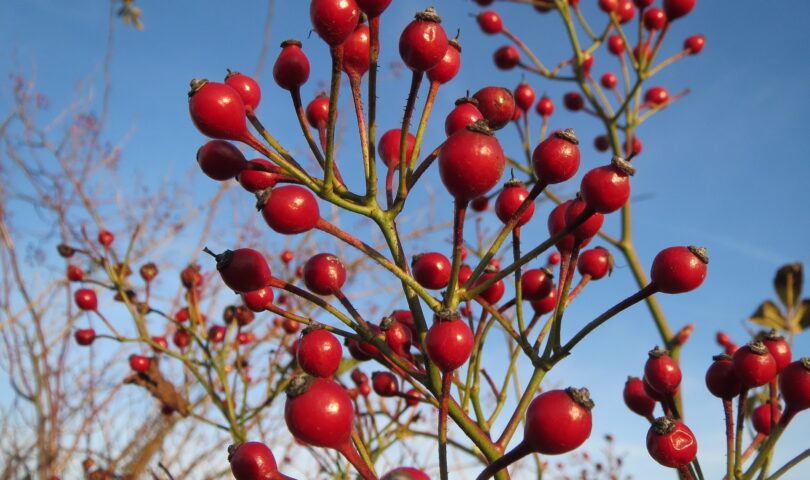Don’t eat little, red berries was an oft repeated warning in my childhood. Some wild berries that look so scrumptious are poisonous, so it is good advice.
Over the last few years I’ve been learning exceptions to the rule. There are some real red gems out there, and with careful identification we can all enjoy some little red berries.
First on the list is one that I didn’t harvest enough of this year — autumn olive berries. The season is just about over, but it was a bumper year and I’m kicking myself for only freezing a few of these berries.
Non-native fast spreaders, autumn olives get a bad rep. They were brought to the area to help damaged lands (such as mined areas) recover more quickly. Autumn olives grow well in bad soils and they fix nitrogen.
Because they are such good growers they can get out of control. But they are pretty (in my opinion) with silvery leaves and fragrant flowers which set small tart berries. From my observation they don’t fruit every year, but when they do they can be prolific.
Some bushes produce sweeter berries than others. When autumn olive berries are to be had, my family uses them in place of cranberries – made into a sauce with apples to add some sweetness they make a great Thanksgiving dinner side.
Another edible little red berry coming into season is also from a non-native plant – the multiflora rose. These small white or pale pink roses were introduced from Asia in the mid 1800s as root stock for other varieties.
Spreading beyond their intended use, they were touted as a living fence and beneficial in erosion control. But then they became considered unwelcome intruders.
However, with the multiflora rose (as with the autumn olive) even if you aren’t happy to have them around, at least make use of the berries! Lemons into lemonade and all that – rose hip tea even tastes a little lemony!
Rose berries — or rather, rose hips — are also tart, and very high in vitamins and other nutrients. They turn red in the fall, and after a frost or two become sweeter and softer. They make a light and tasty tea, alone or in combination with dried rose leaves or with other herbs.
This year I’m seeing more rose hips than in previous years, and I’ve harvested a few even though they aren’t sweet yet.
The third type of little red berry I’ve been going crazy for this year is from a native species – the spice bush. Last spring I wrote about finding spice bushes growing in my woods, and I’m happy to follow up to report: the berries are awesome.
Larger than the aforementioned berries and firm, they pull off the bush easily. Another bonus is that spice bushes don’t have thorns, and are an understory shrub — so mostly within easy reach.
I’m air drying several quarts of the berries. I’ve been using the first dried batch as a pepper substitute. They taste very much like peppercorns, but with a little extra something.
This may be a bumper year for spice bush berries or maybe I always mentally filed them under “don’t eat little red berries” and so never noticed or identified them. Either way, I’m grateful for a plentiful harvest and a new spice to add to my rack.
I hope you enjoy these little red berries — but when you forage be sure to double and triple check identification. There are poisonous little red berries out there.




